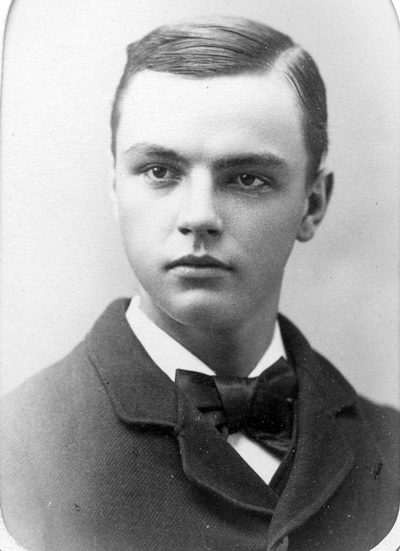"Behind one of Monroe’s old homes is an ingenious truss bridge connecting the house to one of its outbuildings, and this bridge is the only monument which his home town possesses of one of America’s great engineers.” That is the way an article in the Milwaukee Sentinel of Nov. 4, 1934 began.
It went on to say that the bridge, which was 40 inches wide and 44 inches high, was in itself remarkable. But that the history of its builder was even more so. The bridge was built 54 years prior by 13-year-old William Wilberforce Churchill. It was the first evidence of a genius which carried him to the peak of his chosen profession of engineering and made his name known throughout this country and abroad.
The 1934 article mentioned that, “Old timers here still chuckle over the water wheel he built. He placed it under the rain trough and more than once during the night, the whole family was awakened with the weird creaking and groaning of young Churchill’s experiment.”
The article also stated that at the age of 14 “he built a steam engine capable of producing a quarter of a horsepower. A few of the parts for this engine were made for him, but most of it was done by him. The neighbors, a practical lot, used the engine to turn their sewing machine.”
William, who was born in 1867, might have inherited some of his talent and intelligence from his parents. His father, Norman Churchill, was born in Illinois and settled in Monroe about 1840. Norman built many fine buildings in Monroe, including the first grist mill in Green County, the Monroe Planing Mill, the Universalist Church (now the Green County Historical Society museum), and the Arabut Ludlow mansion. William’s mother, Dr. Ann Sherman Churchill, was born in Pennsylvania and came here as a teenager in 1848 with her parents. After getting married in 1854, and while raising their six children in a house on the northwest corner of what is now 13th Avenue and 9th Street, she read medical books and studied with her father, who was a doctor. After her family was almost on their own, she went to Chicago to study. She received her diploma in homeopathic medicine in 1886 and eventually opened an office on the west side of the Square.


William built the bridge with materials that were furnished from his father’s lumber company. The bridge was first displayed at the Green County Fair where a number of severe tests proved its strengths. Even though no prize had been offered for such a display, the startled fair officials presented Churchill with a $5 gold piece, which was probably the smallest fee he ever received for an engineering feat.
William displayed characteristics which later made him so outstanding from his earliest childhood. He went through grade school so rapidly that he had to wait a year to reach the age requirement for entering high school. He graduated from Monroe High School at the age of 16 in 1883. He then attended Rose Polytechnic Institute (now Rose-Hulman Institute of Technology) and then Cornell University in Ithaca, New York from which he graduated in 1889. He then worked for a few months for E. P. Allis in Milwaukee before returning to Cornell as a Fellow, getting his Masters of Mechanical Engineering degree in 1890.
He went to work in Chicago for Westinghouse, Kerr & Co. of New York. He went from there to Pittsburg before Boston where he became the chief mechanical engineer of the company at 38 years old. Within three months he was made the third vice president and director. Among other projects he accomplished in his career were the Boston terminal, several railroads, the Northern Colorado Power Company in Denver, and the electrification of the Long Island railroad in New York to name a few. He was even called to London in 1902 as a consultant in the electrification of the London Underground Railroad.
William was married in New York City in 1894 to Georgia P. Dadmun, who unfortunately passed away on Jan. 7, 1896. He later married the former Lettie Wood, of Monroe, on June 25, 1902. Their son, William Wood Churchill, was born three years later.
Unfortunately, William became ill in 1906 and was forced to retire before his death at 43 in 1910. Surviving him were Lettie (1868-1935), their 5-year-old son (1905-1995), a brother, Ernie N. (1872-1956), of Monroe, and a sister, Minnie B. Cole, of Guerneville, California.
“Death Claims Man of Genius” was the headline for William’s obituary in the Monroe Evening Times. His obituary ended with, “His character was a rare combination of strength, gentleness, talent, ability, and patience — a man held in highest esteem and bound to succeed in all he undertook. He accomplished his life work in fewer years than most men, but it was well-accomplished. It was not how long he lived, but how well.”
His body arrived from Oshkosh on the Friday evening train. The funeral was held at 2 p.m. on Monday afternoon from the Joseph Wood home on West Payne Street (now 9th Street). The service at Greenwood Cemetery was in charge of the Masonic lodge with Masons serving as pall bearers.
— Matt Figi is a Monroe resident and a local historian. His column will appear periodically on Saturdays in the Times. He can be reached at mfigi@tds.net or at 608-325-6503.




